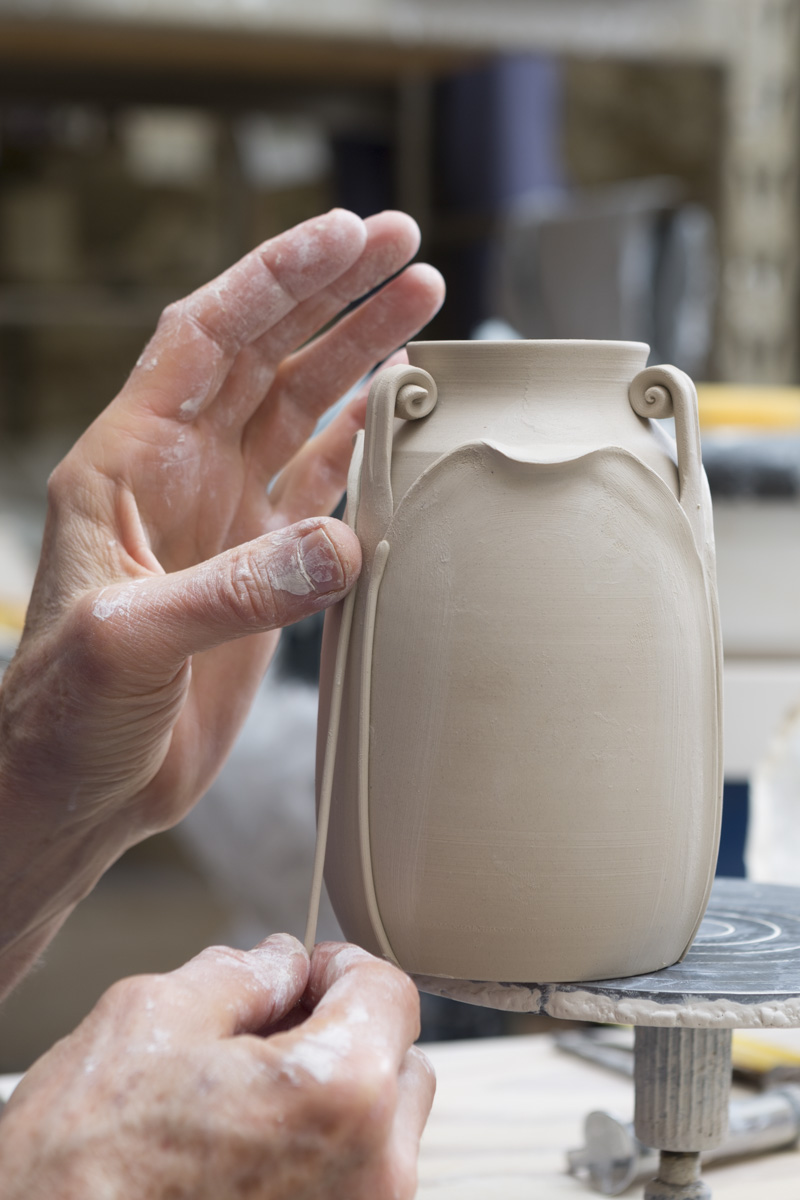About Ephraim Pottery
Handmade just for you
Handcrafted Pottery Since 1996
In the 1990s, with the rise of the cubicle and mass-produced goods, Kevin Hicks revered a time when people made objects by hand. Hicks, a skilled potter with a business degree, imagined a modern artisan guild where collaboration could thrive and handmade products showed the hand of the maker. While celebrating Ephraim Pottery’s 25th anniversary, we sat down with Hicks, who reflected on the studio’s past, present and future.
What originally inspired you to start your own pottery?
I was always drawn to the art room in school. After hours, these art studios were transformed into spaces where artists worked side-by-side and naturally collaborated. That clubhouse atmosphere inspired me to create a ceramic studio where craftspeople had input into the artistic side of the designs. I wanted to merge the traditional factory/production pottery studio model of the past with the modern autonomy of the individual artist. Ephraim’s studio is a unique hybrid—a place where ideas are shared, gathered, and developed as a group.
What part of the art form do you find the most gratifying?
Just like back in art school, I still find it incredibly gratifying to see artists working together and succeeding in creating beautiful, well-made works of art. As a potter, I see throwing forms as creating ‘great bones’—a solid foundation—on which sculptors and glazers are free to complete the design. The pot is really symbolic of the framework of the pottery itself. It is gratifying to offer a good structure, but it takes all of my other collaborators to bring life to the structure.
How would you describe Ephraim Pottery’s aesthetic?
Our aesthetic above all is one where the hand of the maker is evident. Each piece can have its own style, but the pieces are unified by the process of being hand-thrown, sculpted and finished with our in-house designed glazes. We purposely lean away from technologies that remove the artists’ hands from the work such as slip casting, use of molds, ram pressing, and computer aided transfer methods.
What have you learned over the last 25 years?
Ceramics is a never ending source of inspiration. The more I work in ceramics, the more ideas flourish. Also, as we expand our studio and encounter new artists, their new perspectives open us up to fresh avenues of exploration. We recently hired two new young artists. They are a whole generation apart and it is rejuvenating and refreshing to be collaborating with them.
What’s next?
Right now is a profound time of appreciation. We have spent the last 25 years refining our collaboration model and the mood in the studio is dynamic and thriving. The future seems as wide open as it has ever been. I suppose the next chapter involves broadening our model. We have begun this recently by mixing the creative roles in the studio with the more traditional business roles. The lines are blurring and I am very optimistic about where this openness and collaboration will lead.
What are your inspirations from the past?
My earliest influence was Grueby. There is just something about Grueby’s art with the subtle sculpting and decoration and the very rich, organic glazes that looks so different than other potteries.
How do you think Grueby or others from the Arts & Crafts era would view your endeavor?
That’s tough. Let me think of it this way: If someone in the future were to continue this lifestyle and try to push the boundaries of our style and techniques, I would be pleased. I like to think that the potteries of the past would appreciate that we are furthering some of their ideals. At the same time, we are a unique reflection of what our society values now.


